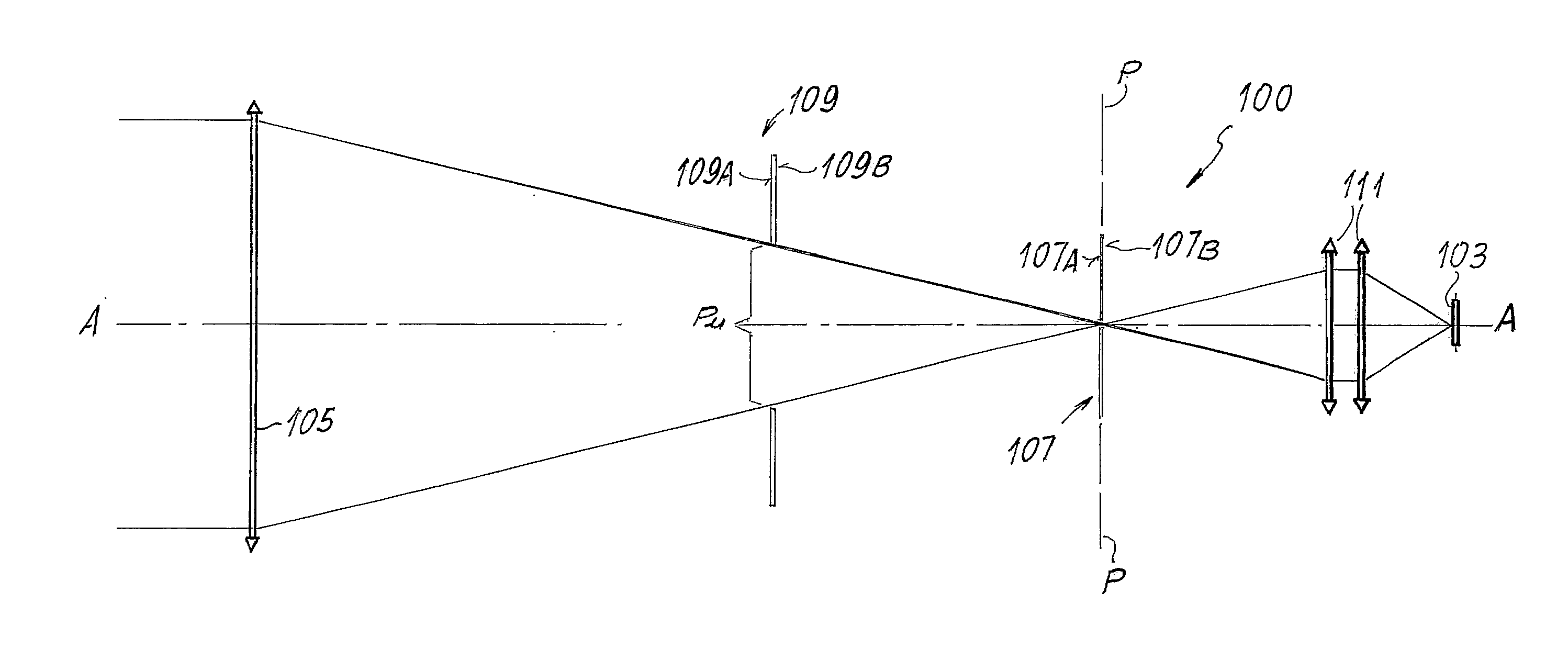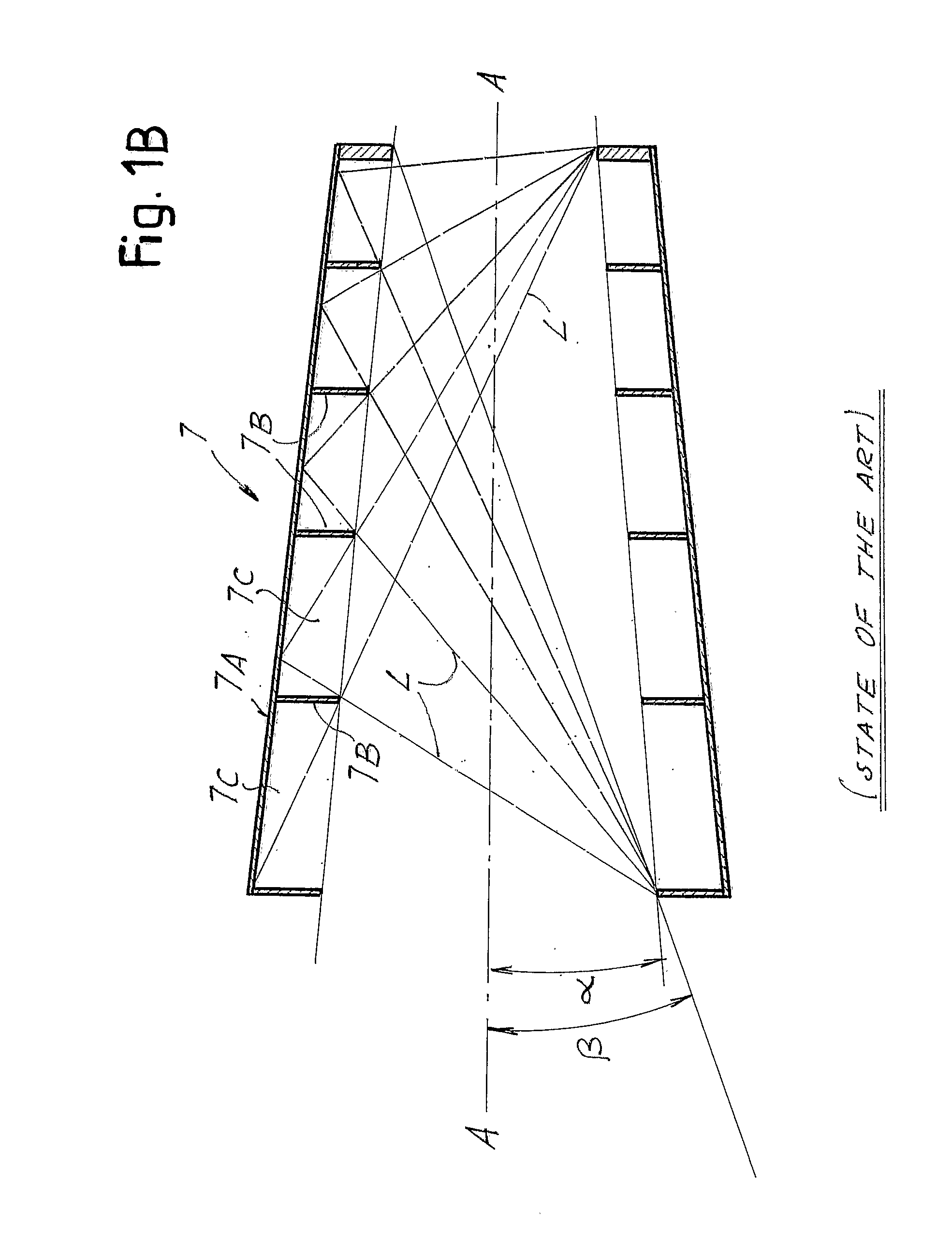Star sensor with reduced sensitivity to stray light induced by the sun or by other sources close to the field of view
a technology of star sensors and stray light, applied in the field of star sensors, can solve the problems of prohibitive light of the sun close to for instance 10° from the field of view, and the dimensions of the shielding baffle, so as to achieve more efficient blocking and reduce the minimum angle formed
- Summary
- Abstract
- Description
- Claims
- Application Information
AI Technical Summary
Benefits of technology
Problems solved by technology
Method used
Image
Examples
Embodiment Construction
[0025]For a better understanding of the present invention, an optical system of a traditional sensor shown schematically in FIG. 1A will first be briefly described. The sensor, designated as a whole by 1, comprises an array detector 3, on which the image of a portion of the celestial vault is formed by means of a primary objective, constituted by a more or less complex optics, designated schematically herein by 5.
[0026]Set in front of the primary objective 5 is an external baffle or shadow 7, which has a particularly large length with respect to the dimension of the objective 5 and the detector 3. The function of the baffles 7 is to shield the objective 5 of the sensor 1, preventing the radiation of sources external to the field of view, for example light radiation coming from the sun, which would blind the detector 3 and thus jeopardize proper operation thereof, from reaching the detector 3 along the optical path.
[0027]Designated by A-A in the diagram of FIG. 1A is the optical axis...
PUM
 Login to View More
Login to View More Abstract
Description
Claims
Application Information
 Login to View More
Login to View More - R&D
- Intellectual Property
- Life Sciences
- Materials
- Tech Scout
- Unparalleled Data Quality
- Higher Quality Content
- 60% Fewer Hallucinations
Browse by: Latest US Patents, China's latest patents, Technical Efficacy Thesaurus, Application Domain, Technology Topic, Popular Technical Reports.
© 2025 PatSnap. All rights reserved.Legal|Privacy policy|Modern Slavery Act Transparency Statement|Sitemap|About US| Contact US: help@patsnap.com



